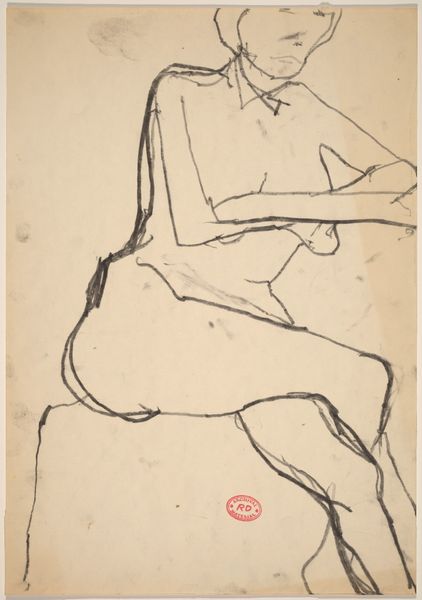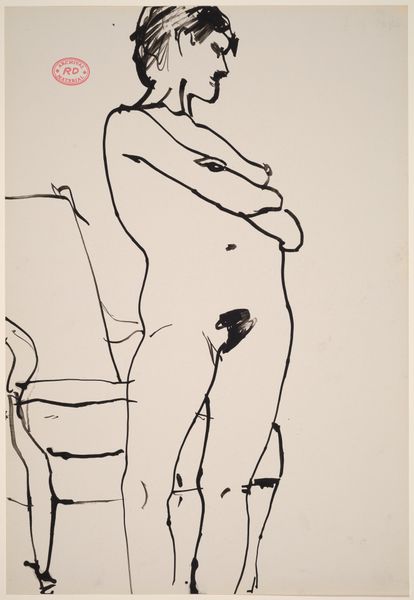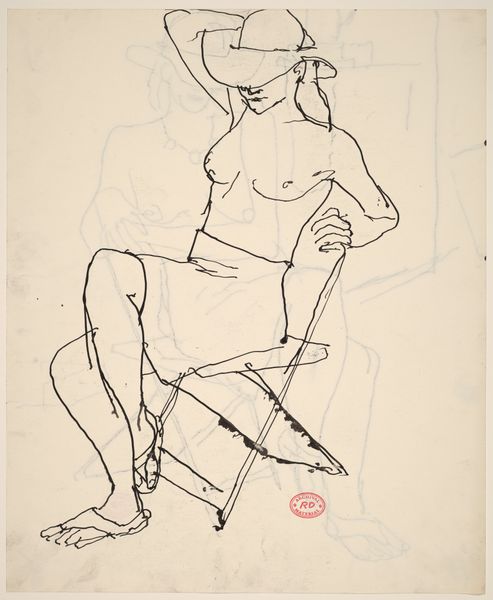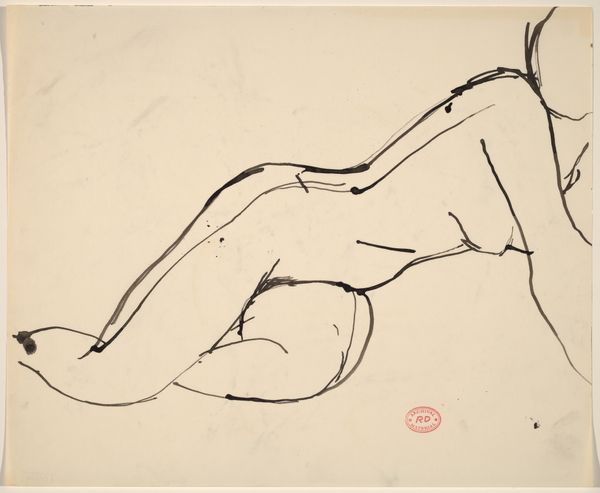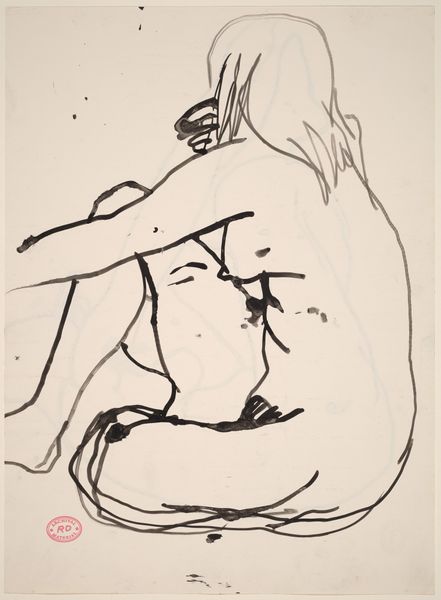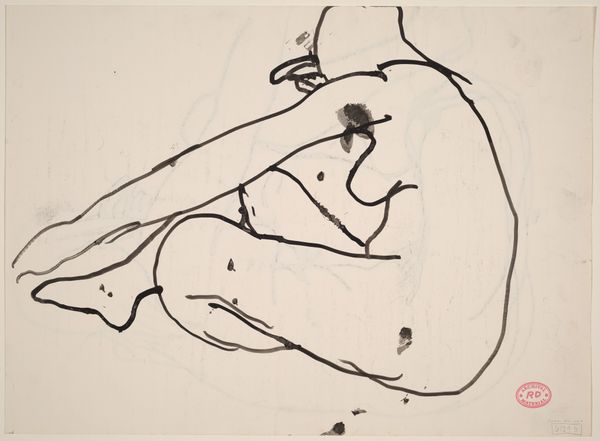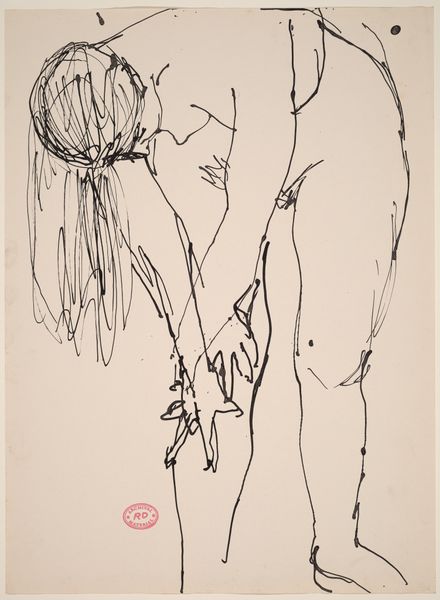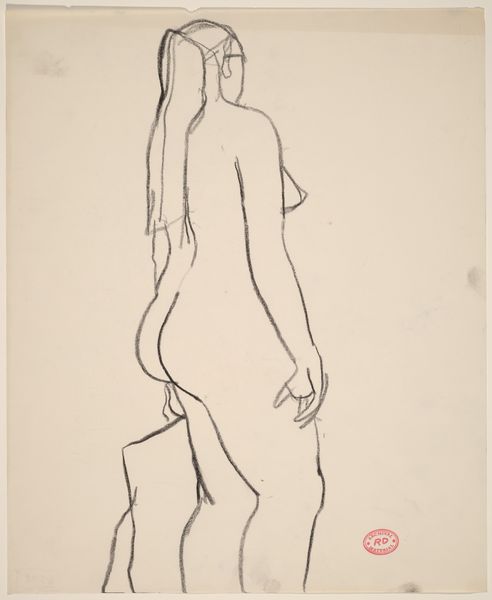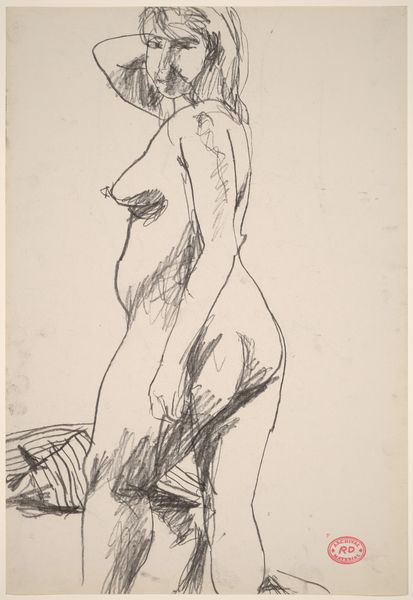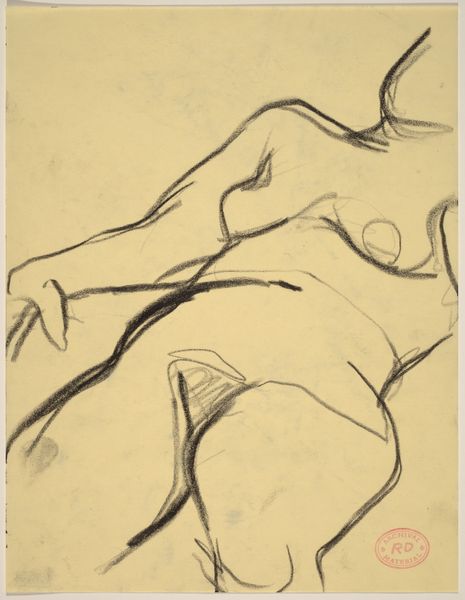![Untitled [seated female nude reaching with left hand] [verso] by Richard Diebenkorn](/_next/image?url=https%3A%2F%2Fd2w8kbdekdi1gv.cloudfront.net%2FeyJidWNrZXQiOiAiYXJ0ZXJhLWltYWdlcy1idWNrZXQiLCAia2V5IjogImFydHdvcmtzL2YwYmVjYzJmLTU2ZDctNDdmMy1hYzM5LTZmNmEzNGM0YmVmZS9mMGJlY2MyZi01NmQ3LTQ3ZjMtYWMzOS02ZjZhMzRjNGJlZmVfZnVsbC5qcGciLCAiZWRpdHMiOiB7InJlc2l6ZSI6IHsid2lkdGgiOiAxOTIwLCAiaGVpZ2h0IjogMTkyMCwgImZpdCI6ICJpbnNpZGUifX19&w=3840&q=75)
Untitled [seated female nude reaching with left hand] [verso] 1955 - 1967
0:00
0:00
drawing, ink, pen
#
abstract-expressionism
#
drawing
#
ink drawing
#
pen sketch
#
figuration
#
bay-area-figurative-movement
#
ink
#
pen
#
nude
#
modernism
Dimensions: sheet: 43.2 x 35.2 cm (17 x 13 7/8 in.)
Copyright: National Gallery of Art: CC0 1.0
Curator: This is an ink drawing by Richard Diebenkorn, titled “Untitled [seated female nude reaching with left hand] [verso]”. It’s estimated to have been made between 1955 and 1967. Editor: It’s sparse, immediate. The ink line is confident, but the figure feels introspective, maybe a little world-weary. Curator: The rapid, almost impatient line work is certainly characteristic of Abstract Expressionist figuration. Note how Diebenkorn uses only a few strokes to suggest volume and shadow. He seems more concerned with the gesture of the pose than a highly rendered depiction of the body. Editor: But who gets to be this blasé about representing the nude? A male artist, obviously, one unconcerned with the historical baggage of objectification. I wonder how the model felt, represented with such...casualness. It's like the drawing itself is turning away from the viewer. Curator: I see it more as an experiment with line and form. The figure occupies a shallow space, created entirely by the suggestion of planes rather than perspectival depth. Consider the dynamism of the limbs and the economy of mark-making; he seems interested in pure structure. Editor: And yet, the gesture is anything but neutral. The reaching hand, the slightly downturned mouth… it speaks to a mood, a state of mind perhaps. We see a glimpse of vulnerability. Even though it’s unfinished, the gesture is powerful. Curator: Agreed. Though not overtly sexualized, it invites our gaze but frustrates our desire for anatomical accuracy. Diebenkorn prioritized conveying an experience, which explains his enduring presence in American Modernism. Editor: The piece prompts one to consider who the artwork prioritizes: the artist? the model? the viewer? Its place in contemporary art demands we ask ourselves, are we implicated in that original, and now historical, act of looking? Curator: His treatment pushes the boundaries of the established tradition. Regardless of subject, line is ultimately the key here. Editor: It invites both careful seeing and uncomfortable questioning about our relationship with the artistic canon.
Comments
No comments
Be the first to comment and join the conversation on the ultimate creative platform.

